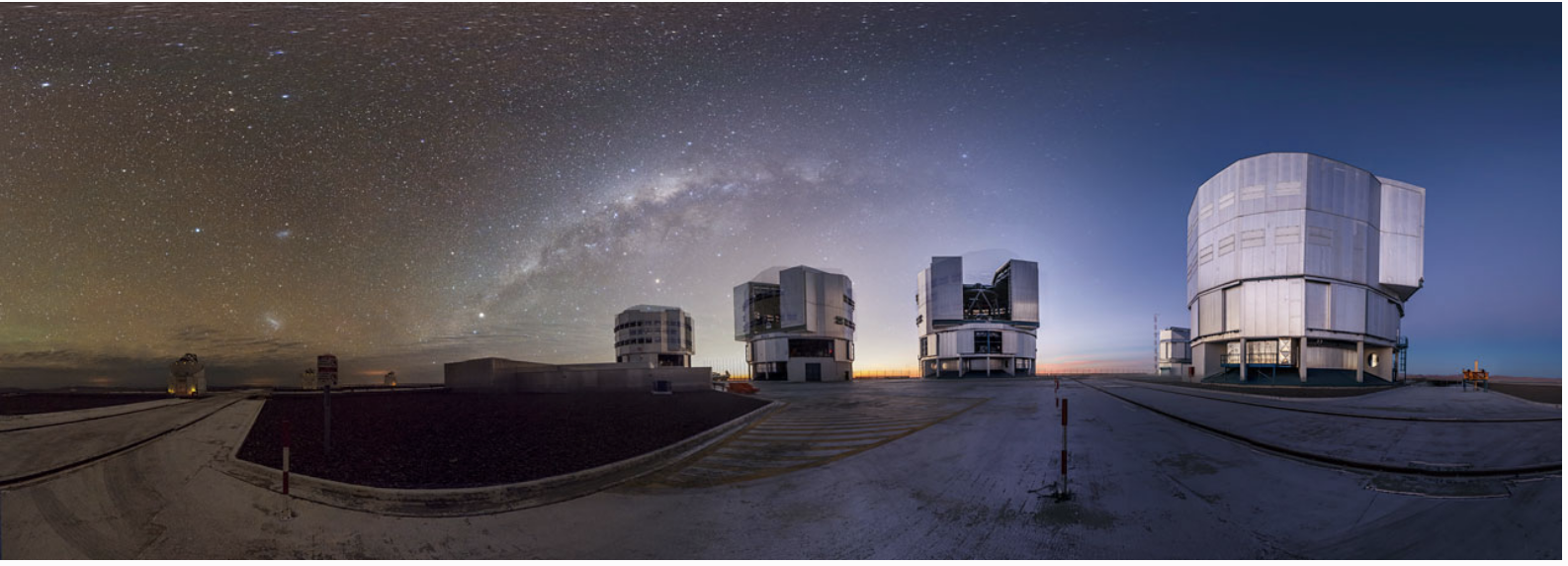
Astronomy is often called the first science. Considering that early humans also made tools and controlled fire, engineers and chemists may disagree. Whether or not astronomy is the first science, Rachel Bezanson is convinced of one thing: “Astronomy is the coolest science.” Bezanson, assistant professor of physics and astronomy, uses CRC resources to analyze large data sets from an international astronomical survey to help answer a fundamental question reaching back to the beginning of the universe – how do galaxies form?
The Atacama Desert in northern Chile is one of the driest places on earth; some areas receive no form of precipitation for years at a time. With no cloud cover and little human habitation, the Atacama is a perfect area for astronomical observatories. Since 2014, Bezanson has spent two weeks at a time in the Atacama working on the Very Large Telescope of the European Southern Observatory as the survey scientist on the Large Early Galaxy Astrophysics Census (LEGA-C), an astronomical survey that has collected high resolution electromagnetic spectra of several thousand galaxies on time scales stretching back eight billion years. Before LEGA-C. spectra were only available for galaxies in the nearby universe, looking back less than one billion years.
The LEGA-C survey spent 130 nights gathering spectra of some 3,200 galaxies – galaxies so far away that the light from their stars has traveled for half the age of the universe to reach earth. The survey was recently completed, and the complete dataset will soon be publicly available.
“We spent nearly six months of nights working on one of the largest telescopes in the world,” says Bezanson, “We looked at galaxies so distant that the light has been traveling toward us for half the age of the universe.”
Bezanson studies the evolution of the oldest and most massive galaxies – how evolving stars assemble to form galaxies, and what causes that evolution to end.
“The spectra are windows into what galaxies were at the beginning,” she explains. “Snapshots. We connect the dots much like archeologists – one bone from one epoch, one bone from another.”
“Using the Very Large Telescope we were able to focus on individual galaxies in tiny patches of the sky, collecting details about how bright a galaxy is at a given wavelength based on the signature emission patterns of elements, and how stars move within galaxies based on measuring redshifts on the Doppler spectrum. We are looking primarily for clues to the average ages of the galaxies, whether they experienced rapid or extended formations, and the effects of dynamical masses derived from stellar velocity dispersions – in other words, motions of stars in the expanding early universe.”
To analyze the data, Bezanson’s team applies sophisticated modeling techniques using CRC resources. Graduate student Yasha Kaushal works in collaboration with CRC with a state-of-the-art Python statistical modeling package called BAGPIPES (Bayesian Analysis of Galaxies for Physical Inference and Parameter Estimation), software that requires significant computation time for each galaxy. She developed a proof of concept based on 10 galaxies using a small allocation on a CRC computing cluster. The team is now working with a much larger computing allocation on the entire group of more than 3,000 galaxies.
BAGPIPES’ sampling algorithm simulates the light of a galaxy as a combination of star light and dust, using data on brightness and spectroscopic data. The simulation creates a history of the star formation for each galaxy, as well as a distribution of parameters like age, mass, and chemical makeup. The goal of the statistical modeling is to characterize the galaxies’ average ages, how rapidly or slowly the stars formed into galaxies, and what explosions or mergers drove that formation.
Kaushal says the project would have taken a very different approach – and a lot more time – without having access to CRC.
“It was invaluable to be able to start playing around when I was building the model. I was able to take time to learn, try new ideas, and demonstrate that the model worked. The CRC staff has been great. I was new to SLURM (the Linux-based workload manager used at CRC). I had a lot to learn and Barry was a big help with writing the code and Kim Wong helped us get set up.” (Barry Moore II is a research faculty consultant at CRC; Kim Wong is associate research professor and CRC’s interim co-director).
What are the biggest questions Bezanson hopes to answer?
“I want to be able to say that we understand what drives the formation of galaxies,” she reflects. “Why is the Milky Way formed the way it is? What dictates the full history of how a galaxy forms and how it evolves? Is the process driven by its own internal properties or by the influence of the neighborhood it lives in? Does a galaxy continue to evolve and cannibalize other galaxies – or does it form and just sit there in isolation?”
Contact:
Brian Connelly
Pitt Center for Research Computing
bgc14@pitt.edu
